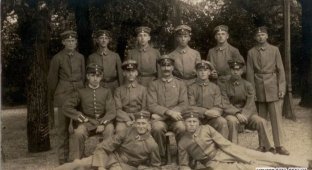During World War II, special attention was paid to the footwear of soldiers and officers in the US Army. The cost of boots (low boots) for a private was comparable to the cost of almost all other uniforms.

The first type of Service Shoes appeared in 1939 as a replacement for World War I infantry boots. These combat boots were made of glossy, dyed brown leather with thick studded leather soles and a horseshoe heel. This type was called Service Shoes Hobnailed. Realizing the high cost of production and the dubious practicality of this type of sole, the military departments quickly took this type out of circulation, but in fairness it is worth noting that there is a lot of photo and video material related to the use of these boots by the Rangers during the landing in Normandy on June 6, 1944. Most likely, these military boots “settled” with the rangers for two reasons: firstly, as the advanced units, the rangers received all the latest developments, and secondly, the rangers could appreciate the excellent grip of the studded sole with the ground, which was indeed an important factor in moment of assault operations.

Despite this, the first type of Service Shoes never became popular in the army, but already in 1940 (according to some sources, at the beginning of 1941), a second type called Shoes Service Composition Sole appeared. As the name implies, the main difference between the second type and the first was the thick rubber sole. It is this type that has become the most common in the army, so let’s take a closer look at its description. The boot, as with the first type, was made of smooth, dyed brown leather, but an additional layer of leather was sewn onto the toe of the boot to increase durability. The shaft reached exactly to the ankle and had 8 eyelets for lace on each side. The sole was sewn with a double stitch to the “body” of the boot, and in some places, like the heel, it was strengthened with nails.

But why did these combat boots become so popular? Firstly, thanks to durable leather and good stitching, the boots did not get wet for a long time and withstood all the hardships of military life. Secondly, these boots were suitable for both combat and “official appearances.” However, these shoes also had disadvantages: they did not get wet for a long time (this is a plus), but at the same time, once wet, they took a very long time to dry, which often made it difficult for fighters to move and even sometimes led to injuries, and the place where the boot was sewn to the “body” " of the boot, it tore quickly, despite the triple stitching.

Taking these factors into account, engineers introduced the third type of Service Shoes already in 1943. This model was more suitable for combat operations. The most important difference of the third type was the material: now military boots were made from reverse leather. This step was due to the fact that, although reverse leather got wet much faster than smooth leather, it also dried almost instantly. In addition to this important innovation, riveting was added to the design at the junction of the shin and the “body” of the boot, which prevented the seams from coming apart even under high loads. The stitching of the boot nose and sole was also simplified.

Despite the seemingly successful innovations, the fourth type was recognized as the most comfortable in battle - Service Shoes Reverse Upper, released in June 1943. In fact, they were the most simplified copy of the third type, but such simplifications benefited them: the boot itself was made of elastic and light reverse leather, which bent well and dried quickly when wet. Additional toe reinforcement and two top eyelets were removed from the design, making the boot a bit shorter but much more comfortable to run on. Now the boot barely rested against the leg when it was bent. The changes also affected the soles. Now it was made from thin and soft rubber.

These boots were widely distributed on the ETTV until the winter of 1944, but after that everything changed dramatically: Service Combat Boots began to arrive in units. In fact, these military boots were developed and put into operation in November 1943, but due to the high workload of industry at that time, they reached the front a year later. This model instantly became the most popular in infantry units. The main advantage of the Service Combat Boots was a leather gaiter sewn to the boot's top with two straps. For that time it was a real breakthrough. Previously, a fighter had to wear not only army boots, but also gaiters, which required a lot of time to lace, which greatly influenced the quality of combat. Of course, during the war, soldiers learned to take off their boots without unlacing their gaiters, but the advantages of the new model were undeniable. Unlike the boot itself, the gaiter was made of smooth leather and had two straps and two buckles for them. The inside of the gaiter was additionally lined with white or olive fabric. In addition, the rivets at the junction of the boot and the “body” of the boot were removed from the structure.

It was in these boots that American soldiers marched from the very shores of Normandy to Bavaria, and Service Combat Boots became the main boots in the US Army until the 1949 reform.
[img]https://cn15.nevsedoma.com.ua/photo/10/1041/245_files/bojcy-41-go-pehotnog-polka-armii-ssha-vo-francii-v-1944-godu.jpg[/ img]


























